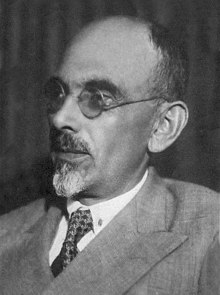Since the earliest
civilizations, Georgians have been honing their artistic talents. Every group
who came in and controlled this area left a piece of their own culture when
they were here which stayed when they left. Because of its location, early
influences on Georgian art include that of the Mesopotamians (now Iraq, Kuwait,
and parts of Syria, Turkey, and Iran), Anatolians (now mostly Turkey, but parts
of Georgia, Azerbaijan, Armenia, and Mesopotamian lands), Greeks, Persians (now
mostly in Iran), Romans, and Byzantines (Bulgaria, Greece, Russia, Macedonia,
Montenegro, Serbia, Romania, Ukraine, Moldova, and Belarus).
Early art included
paintings and mosaic arts of religious figures and scenes. Calligraphy and
religious iconography were especially coveted skills in the church.
Religious-based sculptures of prominent saints and Biblical characters fill not
only churches but some more well-off people’s homes as well. Goldsmith work was also very popular,
especially in both jewelry and in small sculptures and reliquaries.
Towards the late 19th
century and into the 20th century, Georgian art began to be
influenced from other areas of Europe, namely the traditions coming out of the
art capitals of Europe: France, Italy, Spain, and elsewhere. Russian art also
had a huge impact on Georgian art, especially while under Russian rule.
Some of the major
Georgian artists include Gia Bugadze (muralist, painter, Rector of the Tbilisi
State Academy of Arts from 2003-2012), Gigo Gabashvili (painter, first major
painter to paint all different kinds of subjects in both oils and watercolor),
Lado Gudiashvili (painter, used a lot of mythological influences), David
Kakabadze (avant-garde painter, graphic artist, scenic designer), Shalva
Kikodze (expressionist painter, graphic artist, theatre set designer), Niko
Pirosmani (known simply as Nikala, primitivist painter, portrait is on the 1-gel
banknote), and Sergo Tbileli (painter, sculpter, and designer).
 |
| by Niko Pirosmani |
The earliest
literature from the pre-Christian days was in the form of epic poems.
Historical accounts, hymns, and stories about the royalty were also commonly
written during the early periods of Georgian literature. After Christianity was
introduced to the Georgian people, hagiographic and other religious writing
dominated the canon of literature in the early centuries of this era.
| from a Georgian-Italian dictionary |
Secular epic poetry
and odes were still probably the most commonly written works during the Middle
Ages. Contributing to the world of prose with Book of Wisdom and Lies, Prince Sulkhan-Saba Orbeiani also created
the first Georgian language dictionary during the 17th century. The
Georgian language borrows words from many other languages, but its grammar is
unique in and of its own. (I wish someone would explain Georgian names to me,
though. It seems that many last names either end in “–dze” or “–vili.” Does
this have a particular meaning?) Soon after dictionaries of Georgian to other languages began to be produced as well.
Nineteenth- and
twentieth-century writing shows many influential characteristics from styles
that are commonly used in Russian literature. During the Soviet period, Georgian writers and other
intellectuals suffered greatly in Joseph Stalin’s “Great Purge.” Eclectic
poetry and prose seemed to dominate Georgian literature during the post-Soviet
years. Donald Rayfield, a London
professor of Georgian and Russian, wrote a book called The Literature of Georgia: A History, chronicling the influences of
Georgian literature throughout the centuries. It’s the first of its kind
written in the English language and a great reference in Georgian literature.
 |
| K Gamsakhurdia -- not a happy guy. |
Konstantine
Gamsakhurdia is considered one of the most influential Georgian writers of the
20th century. Although he was highly opposed to the Russian politics
of the day, he somehow managed to escape the fate of most other writers and
intellectuals. He is most famous for his novel The Right Hand of the Grand Master and his post-WWII works The Flowering of the Vine and David the Builder.
 |
| M Javakhishvili |
Mikheil Javakhishvili
often shares the podium next to Gamsakhurdia as the other most influential
writer from Georgia. Javakhishvili tended to incorporate folk language into his
writing and his topics ranged from the differences between country and city
life, rebellion, violence, sexual passions, and other taboo subject matter.
This didn’t put him in the Russian’s good graces. He’s best known for his
novels Jaqo’s Dispossessed and Arsena Marabdeli. Unlike Gamsakhurdia,
Javakhishvili was not able to escape the grip of Stalin’s Great Purge; he was
executed in 1937.
Up next: music and
dance


No comments:
Post a Comment